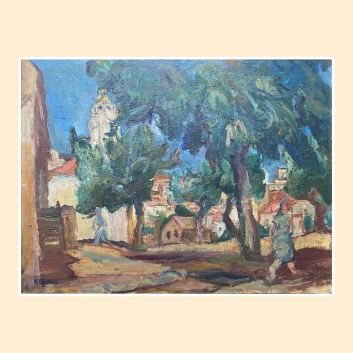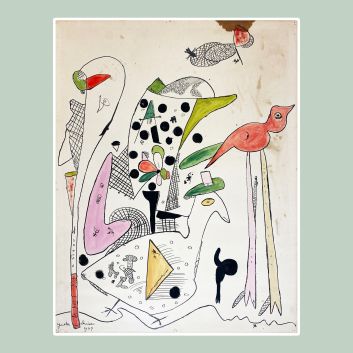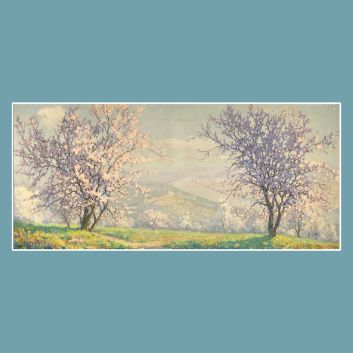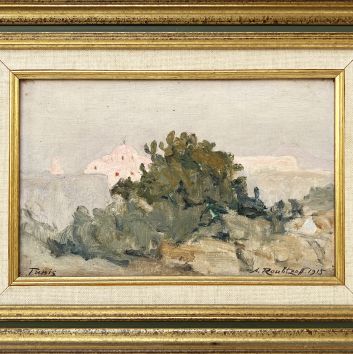Rating and value of paintings by André Derain
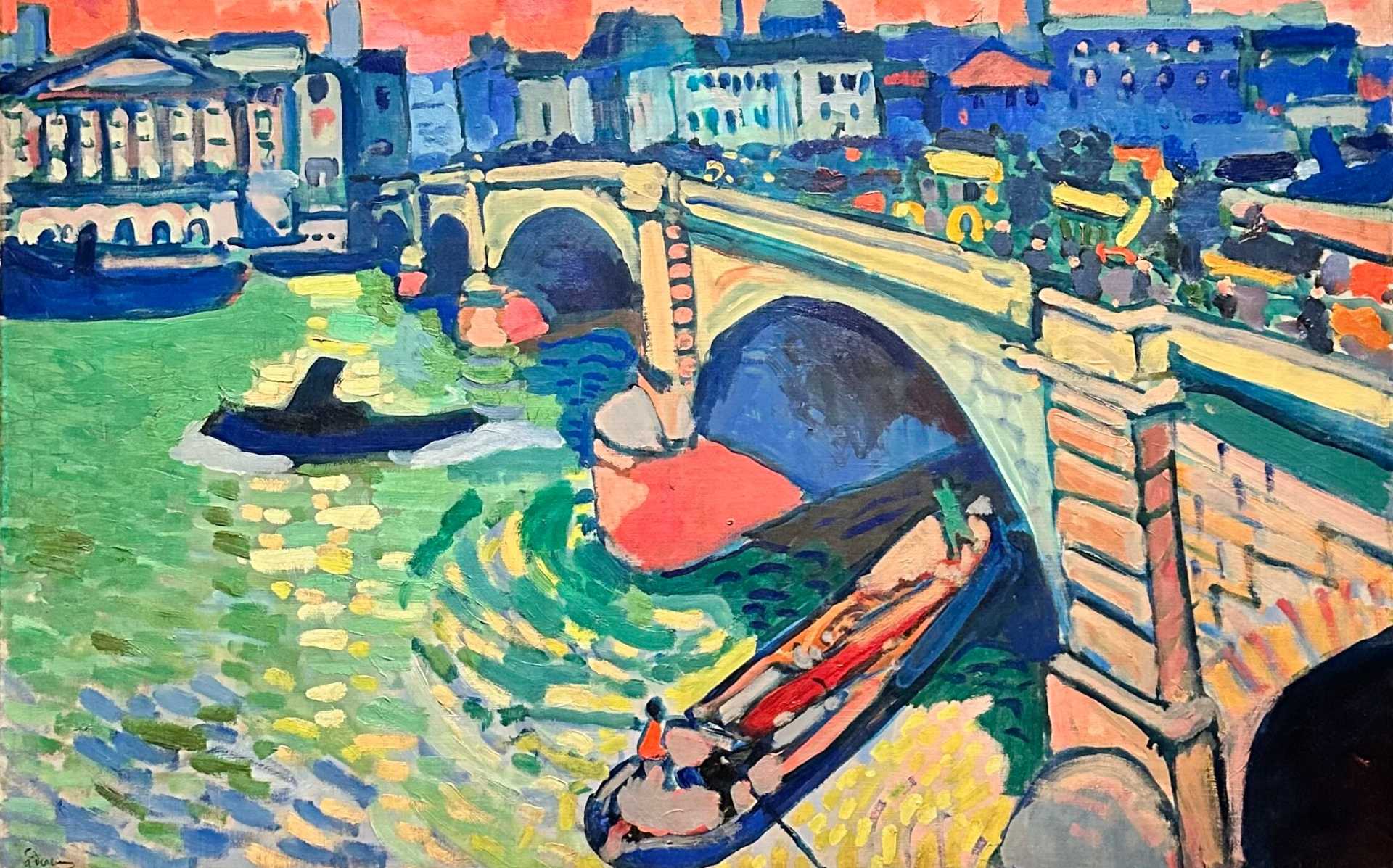
If you own a work by or based on the artist André Derain and would like to know its value, our state-approved experts and auctioneers can help you. Our specialists will carry out a free appraisal of your work, and provide you with a precise estimate of its value on the current market. Then, if you wish to sell your work of art, we will guide you towards the best possible means of obtaining the best possible price.
Artist's rating and value
Works by André Derain are quite common on the art market. Associated with the Fauvist group, works by this movement are the most sought-after by 20th-century collectors, especially those depicting Provence, with sales that can exceed the million euro mark. Equally prized are his works that are not categorized as Fauvist, which can fetch tens of thousands of euros at auction. Works by André Derain sell for between €10 and €17,373,900 on the art market, a substantial range but one that speaks volumes about the value that can be attributed to these works. In 2018, his oil on canvas Bateaux à Collioure sold for €10,721,300, while it was estimated at €8,474,180 to €11,285,580 by Sotheby's.
Order of value from the most basic to the most prestigious
Technique used | Results |
|---|---|
Prints - multiples | From €10 to €39,400 |
Sculpture - volume | From €200 to €46,309 |
Tapestry | From €1,550 to €33,000 |
Drawing - watercolor | From €50 to €412,570 |
Oil on canvas | From €350 to €17,373,900 |
Response in less than 24h
Artist's style and technique
Derain's works are characterized by synthetic, compact compositions (i.e., the horizon line is drawn at the height of the painting), a sacrifice of detail and a simplification of light.
The intense light of southern France has the effect of evacuating the perception of detail. The link between color and light is established through the flat tint or the fragmented brushstroke, leaving the canvas in reserve. This presence of reserve in the painting is intended to evoke light and its dazzling effect on the viewer. It is an essential element of the Fauvist group.
André Derain, a major figure of Fauvism
André Derain (1880-1954) was born into a wealthy family and showed his genius for painting as early as high school. At
1898, Derain begins his studies at the Camillo Academy, directed by the Symbolist painter Eugène Carrière. At
At the same time, the young artist met Henri Matisse and the painter Maurice de Vlaminck, who would remain his friend throughout his career. It was in Collioure, in the company of Matisse, that he revolutionized the aesthetics of the turn of the century. After a brief period at the Académie Julian, Derain was quickly propelled onto the art scene by his friends, and began exhibiting at the Salon d'Automne in 1905.
The Salon d'Automne caused a scandal in 1905. In the middle of Room VII, which featured works by those who would later be called "the Fauves", were traditional busts by Albert Marquet. Louis de Vauxcelles wrote: "The candor of these busts surprises amidst the orgy of pure tones: it's Donatello among the Fauves". Derain himself wrote of his work to Matisse: "I let myself go to color by color". His canvases are characterized by the use of vivid nuances, propelled onto the support by broad brushstrokes that hint at movement. Derain's compositions, like those of the other Fauvists, embodied the beginning of the twentieth-century artistic revolution, through scandal and novelty.
Gradually, Derain's style evolved. It was also at this time that Derain produced his first illustrations. In the 1920s, Derain's work became more realistic and classical, in reference to the Old Masters. The term "return to order" echoes the neo-classical ideal. Picasso and Braque temporarily follow suit.
After the First World War, André Derain created numerous ballet and theater sets, notably for Serge de Diaghilev, founder of the Ballets Russes. Far from neglecting the beginnings of his art, the artist returned to Fauvist painting in the 1940s. André Derain died in a car accident in 1954, leaving behind a significant artistic legacy.
Derain's imprint on his period
Derain left a lasting mark on his period, notably with the scandal of Salle VII, which ushered in the pictorial and artistic upheavals of the 20th century. Today, many of his works are exhibited in museums in France and around the world, but collectors play the greatest role in preserving his work.
The artist's signature
Not all André Derain's works are signed. Works are usually stamped with the words "Atelier Derain".
Although there are variations, here is a first example of its signature:
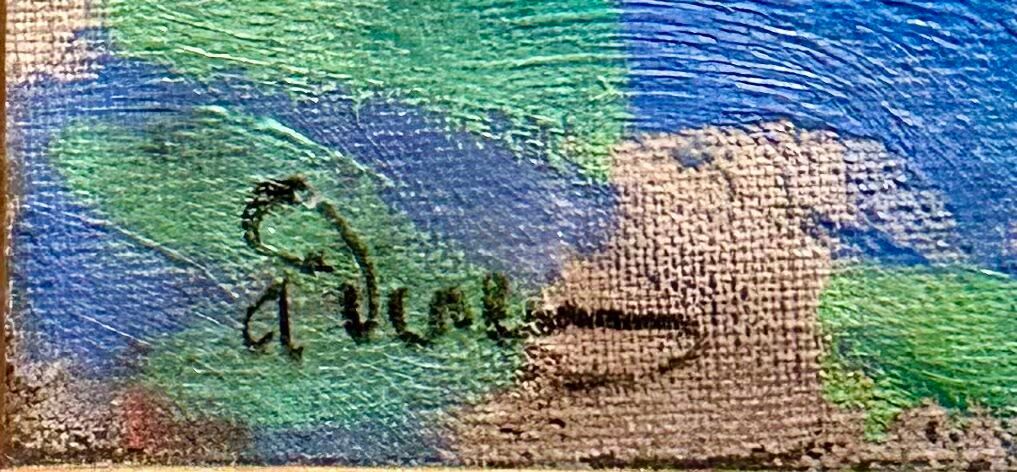
Appraising your property
If you happen to own a work by André Derain, don't hesitate to request a free appraisal using the form on our website. A member of our team will contact you promptly with an estimate of the value of your work, as well as providing you with all the relevant information. If you're thinking of selling your work, our specialists will also be on hand to help you find alternatives for selling it at the best possible price.
Response in less than 24h
Related topics
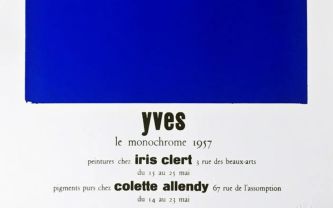
Rating and value of paintings, sculptures and drawings by Yves Klei...
Yves Klein is a 20th-century artist who founded Contemporary Art. His value is extremely high and he is much sought-after at auction.
Read more >

Tableaux Alix Aymé - Value, quotation, artist
Alix Aymé is a 20th-century French artist. Her drawings and paintings are successful and highly prized at auction.
Read more >
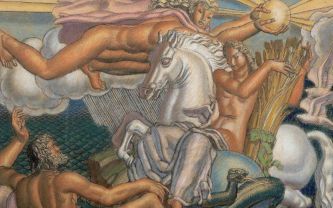
Cote et valeur 2024 des tableaux, dessins, peintures de Jean...
Jean Dupas is a twentieth-century artist whose Art Deco works are highly valued at auction.
Read more >
Secure site, anonymity preserved
State-approved auctioneer and expert
Free, certified estimates
